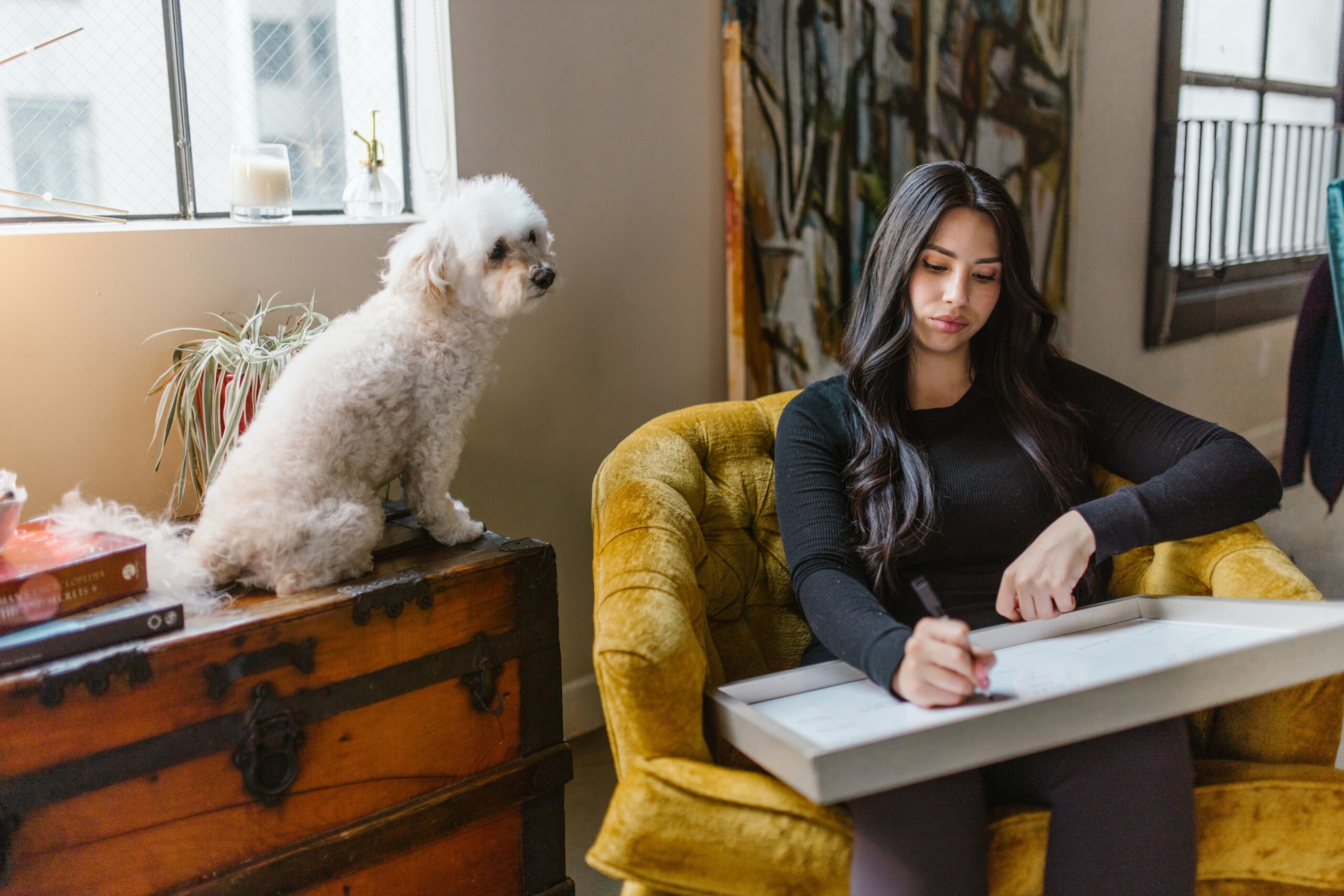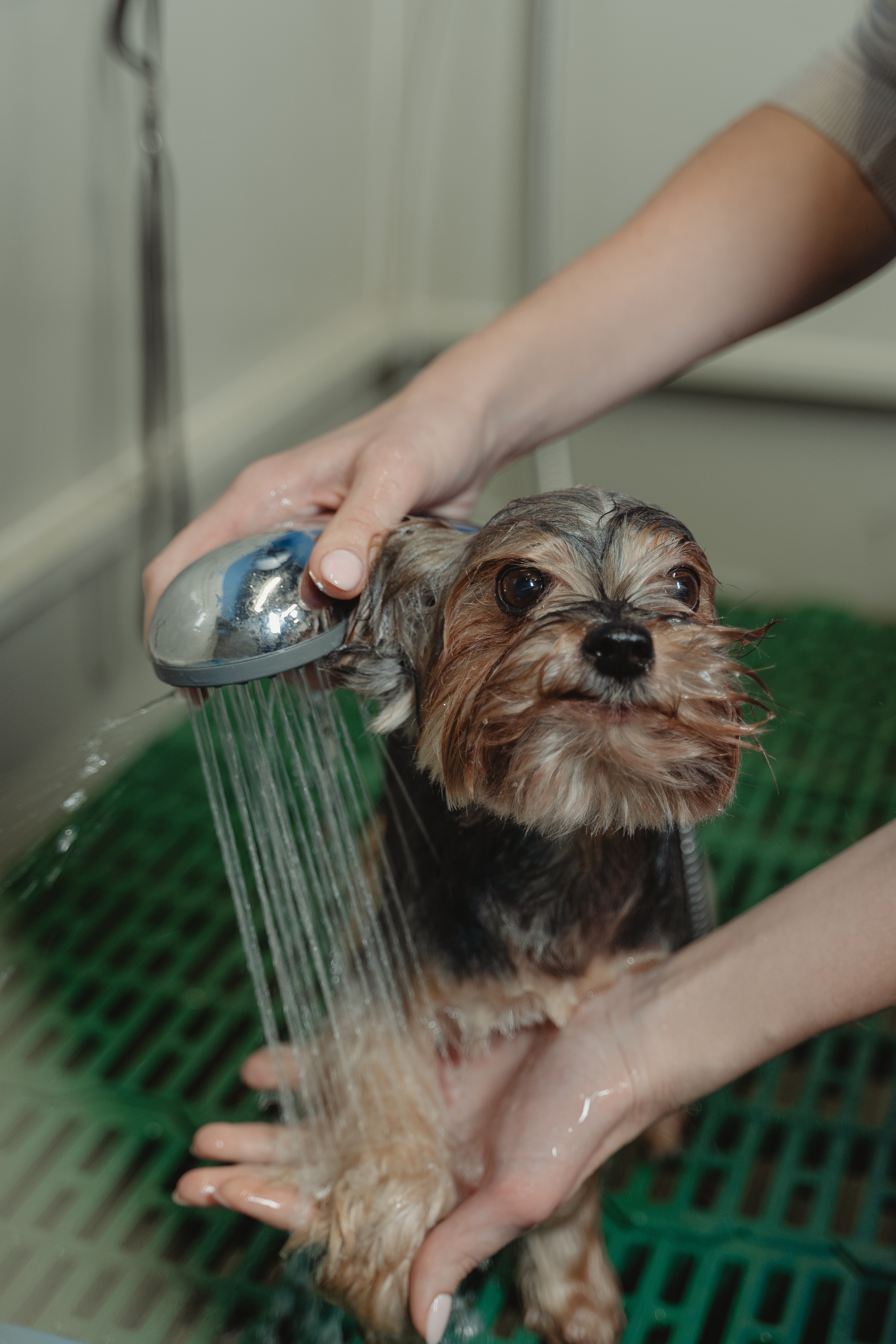The Puzzling Behavior of Sudden Sitting in Puppies Puppies, with their boundless energy and playful antics, can often surprise us with their quirky behaviors. One such behavior that might leave you scratching your head is when your adorable furball suddenly plops down and sits, seemingly out of the blue. While it might appear amusing at first glance, this behavior raises questions about what’s going on in your puppy’s mind. Why does your lively and active pup decide to take a seat right in the middle of playtime or a walk? In this article, we delve into the intriguing world of canine behavior to unravel the mysteries behind why your puppy keeps sitting down suddenly.
Importance of Understanding Canine Behavior Developing a deeper understanding of canine behavior is not only fascinating but also crucial for responsible pet ownership. Our four-legged companions communicate with us in various ways, often using subtle cues that might be easily overlooked. By deciphering their behaviors, we can enhance our bond with them, address their needs effectively, and ensure their well-being. Understanding the reasons behind your puppy’s sudden sitting can prevent unnecessary concern and provide insights into their physical and emotional states.
C. Overview of the Article’s Focus Throughout this article, we will explore the potential factors contributing to your puppy’s sudden sitting behavior. We’ll start by examining what constitutes normal puppy behavior and how it relates to their inclination to sit unexpectedly. We’ll then delve into common reasons for this behavior, considering both physical discomfort and emotional triggers. Additionally, we’ll delve into the fascinating realm of canine communication and social signals, shedding light on how your puppy’s sudden sitting might be a form of non-verbal expression. The role of training and conditioning in shaping this behavior will also be explored, along with practical advice on how to observe and respond to your puppy’s actions. By the end of this article, you’ll be better equipped to decipher your puppy’s behavior and provide the care and attention they need.
Normal Puppy Behavior
Energetic Nature of Puppies Puppies are like little bundles of energy, often bounding around with an enthusiasm that seems boundless. This high level of energy is a natural and normal characteristic of young dogs. Just like human children, puppies have an innate curiosity about the world around them, which leads them to explore, play, and engage in various activities. Their exuberance is a sign of their health and vitality, showcasing their potential for growth and development.
Learning Through Exploration and Play Play is a crucial aspect of a puppy’s development. It serves as a medium through which they learn about their environment, socialize with other dogs and humans, and acquire essential life skills. Puppies engage in play to sharpen their physical abilities, practice hunting behaviors, and establish relationships with their littermates and caretakers. During playtime, puppies often switch between various actions, including running, jumping, chasing, and yes, even sitting. This eclectic behavior is a testament to their eagerness to experiment and learn.
Natural Instincts and Behaviors Puppies are born with a set of natural instincts and behaviors that help them navigate their world. These instincts, honed over generations, serve as a survival mechanism and are deeply ingrained in their genetic makeup. One such instinct is the propensity to sit or lie down when they perceive a potential threat or to assess a new situation. This behavior allows puppies to make quick assessments of their surroundings, observe potential dangers, and determine the best course of action. While sitting may seem sudden to us, it’s an instinctive behavior that reflects your puppy’s instinctual need to gather information and stay safe.
Understanding the energetic nature of puppies, their penchant for learning through play, and the influence of their natural instincts provides valuable context for interpreting their sudden sitting behavior. As we move forward in our exploration, we will delve into the potential factors that may lead your puppy to sit down unexpectedly and the underlying motivations behind this curious action.
Common Reasons for Sudden Sitting
Physical Discomfort or Pain
- Potential Health Issues Sudden sitting in puppies can sometimes be a response to underlying health problems. Puppies may sit down abruptly if they are experiencing discomfort or pain. It’s important to consider various health issues, such as urinary tract infections, gastrointestinal problems, or respiratory issues, as potential culprits. Your puppy’s sudden sitting might be their way of alleviating the discomfort they’re feeling.
- Orthopedic Problems Puppies are naturally active and can be prone to minor injuries or strains, especially in their developing musculoskeletal systems. If your puppy has orthopedic issues, such as joint pain or muscle discomfort, they might sit down suddenly to reduce the pressure on affected areas. Keep an eye out for any signs of limping, stiffness, or difficulty moving, as these could indicate orthopedic concerns.
- Digestive Discomfort An upset stomach or digestive problems could also lead to sudden sitting in puppies. If your puppy is experiencing gas, bloating, or indigestion, they might sit down as a way to find relief. Additionally, puppies may sit after eating to aid digestion, as changing their body position can help move food through their system more easily. Monitoring their eating habits and any signs of gastrointestinal distress can help you understand if digestive issues are contributing to their behavior.
Mental and Emotional Factors
- Overstimulation or Sensory Overload Puppies are curious and easily captivated by their surroundings, but excessive stimuli can be overwhelming. If your puppy is exposed to new environments, loud noises, or too much sensory input, they might suddenly sit down to take a break and process the information. This behavior can serve as a way for them to cope with overstimulation and regain their composure.
- Anxiety or Fear Triggers Just like humans, puppies can experience anxiety or fear in response to various situations. If your puppy is faced with unfamiliar people, places, or experiences that trigger anxiety, they might sit down as a way to signal submission or to distance themselves from potential stressors. Understanding your puppy’s triggers and providing a supportive environment can help ease their anxiety.
- Stressful Environments Puppies are perceptive creatures that can pick up on changes in their environment or the emotional states of those around them. Stress within the household, disruptions in routine, or exposure to tense situations can lead to sudden sitting as a form of self-soothing or to communicate their unease. Creating a calm and stable environment is important for helping your puppy feel secure and at ease.
By exploring the potential physical discomfort and emotional factors that can contribute to sudden sitting behavior in puppies, we gain valuable insights into their needs and feelings. In the next section, we’ll delve into the fascinating world of canine communication and social signals to better understand the non-verbal messages your puppy might be conveying through this behavior.
Communication and Social Signals
Calming Signals
- Appeasement Behavior Dogs are masters of non-verbal communication, and puppies often use appeasement behavior to convey their friendly intentions and avoid conflict. Sudden sitting can be a subtle way for your puppy to signal to other dogs or people that they mean no harm and want to maintain a positive interaction. This behavior can help pave the way for smoother social encounters and reinforce a sense of harmony.
- Trying to Diffuse Tension Just as humans use body language to defuse tense situations, puppies employ calming signals to reduce stress within their social circles. If your puppy senses heightened emotions or potential conflict, sudden sitting can serve as a way to alleviate tension and promote a more relaxed atmosphere. By taking a break and sitting down, your puppy is actively contributing to a more peaceful environment.
- Establishing Social Hierarchy Puppies are inherently social animals, and understanding their place within a group is essential for their well-being. Sudden sitting can sometimes be a display of submission, especially when interacting with more dominant dogs or humans. By adopting a submissive posture, your puppy acknowledges the authority of others and helps establish a clear social hierarchy, which is crucial for maintaining order and cooperation.
Non-verbal Communication
- Submission to Dominant Dogs or People Puppies learn from an early age to recognize authority figures in their lives. Sudden sitting can be a form of deference and respect, particularly when interacting with more dominant individuals. This behavior showcases your puppy’s understanding of the social dynamics and their willingness to comply with the established hierarchy, contributing to smoother interactions and reduced tension.
- Seeking Attention or Rewards Puppies are quick learners and are adept at understanding cause-and-effect relationships. If your puppy has associated sitting with receiving attention, pets, treats, or other rewards, they may employ this behavior strategically. By sitting down suddenly, your puppy may be trying to catch your eye and prompt a favorable response from you, reinforcing their learned behavior.
- Avoiding Confrontation or Conflict Dogs possess an innate ability to read social cues and anticipate potential conflicts. Sudden sitting can be a preemptive measure to avoid confrontational situations. By assuming a non-threatening posture, your puppy signals their desire to steer clear of conflict and maintain a peaceful environment, showcasing their social intelligence.
Understanding the intricate language of canine communication and the subtle ways in which puppies convey their intentions allows you to connect more deeply with your furry companion. As we proceed, we’ll explore how training and conditioning can influence your puppy’s sudden sitting behavior and provide practical guidance for fostering positive behaviors.
Training and Conditioning
Positive Reinforcement
- Associating Sitting with Rewards Harnessing the power of positive reinforcement is a cornerstone of effective puppy training. To address sudden sitting behavior, you can create a positive association by rewarding your puppy whenever they sit on command or spontaneously. Use treats, praise, or toys as rewards to reinforce the idea that sitting brings about positive outcomes. Over time, your puppy will come to understand that sitting is a desirable behavior, increasing the likelihood of them repeating it.
- Teaching Commands and Cues Incorporating commands and cues into your puppy’s training can provide structure and guidance. Teach a specific cue, such as “sit,” that prompts your puppy to sit on command. Regular practice and consistent use of the cue will help your puppy understand the desired behavior. By integrating this command into your daily routine and interactions, you can encourage your puppy to sit when appropriate and respond to your cues.
- Encouraging Desirable Behaviors Positive reinforcement extends beyond treats and rewards. Shower your puppy with affection, pets, and enthusiastic praise whenever they exhibit desirable behaviors. If your puppy tends to sit suddenly in specific situations, like during mealtime or before walks, use these opportunities to reinforce their behavior positively. By providing immediate positive feedback, you reinforce the notion that sitting is a valuable and appreciated behavior.
Pavlovian Conditioning
- Environmental Triggers for Sitting Puppies are incredibly perceptive and can associate certain environmental cues with specific actions. If your puppy frequently sits in particular locations or situations, they may have formed a subconscious connection between those triggers and the act of sitting. Pay attention to these patterns and take advantage of them to reinforce positive behavior.
- Unintended Reinforcement of Sitting Behavior Sometimes, unintentional behaviors on our part can inadvertently reinforce a puppy’s actions. For instance, if your puppy sits down suddenly and you give them attention or treats to coax them up, they might associate sitting with receiving rewards. Be mindful of your reactions and ensure that you’re not unknowingly reinforcing the behavior you’re trying to modify.
- Breaking Unintentional Patterns If your puppy’s sudden sitting behavior is linked to specific triggers or actions, you can work to break these associations through gradual desensitization. For instance, if your puppy tends to sit when they see their leash, try picking up the leash without immediately going for a walk. This can help dissociate the sitting behavior from the trigger and promote more intentional responses.
By utilizing positive reinforcement techniques and understanding the principles of Pavlovian conditioning, you can shape your puppy’s behavior and guide them towards more desirable actions. The next section will focus on the importance of observation and seeking professional advice to address sudden sitting behavior effectively.
Observing and Responding
Importance of Observation
- Identifying Patterns Careful observation of your puppy’s behavior is a powerful tool in understanding their actions. Take note of when and where your puppy tends to sit suddenly. Are there specific triggers or situations that consistently lead to this behavior? By identifying patterns, you can gain insights into the underlying reasons for their sudden sitting and make informed decisions on how to address it.
- Distinguishing Between Normal and Abnormal Behavior Every puppy has their unique quirks and behaviors, but it’s crucial to discern between normal and potentially concerning actions. If your puppy’s sudden sitting appears out of character or is accompanied by other unusual behaviors, it might be an indicator of an underlying issue. Being attuned to changes in their behavior can help you differentiate between harmless idiosyncrasies and signs that require attention.
Seeking Professional Advice
- Consulting a Veterinarian If you’re uncertain about the reasons behind your puppy’s sudden sitting or suspect any health-related factors, consulting a veterinarian is essential. A thorough physical examination can rule out potential medical issues that might be contributing to your puppy’s behavior. Your veterinarian can provide valuable insights, offer guidance on potential treatments, and ensure your puppy’s overall well-being.
- Consulting a Professional Dog Trainer or Behaviorist If your puppy’s sudden sitting behavior persists or if you’re struggling to address it on your own, seeking guidance from a professional dog trainer or behaviorist is a proactive step. These experts have the knowledge and experience to assess your puppy’s behavior, identify contributing factors, and design a tailored training plan. They can help you address the root causes of the behavior and provide effective strategies for modifying it.
Remember, the journey to understanding and addressing your puppy’s sudden sitting behavior requires patience and commitment. By closely observing their actions, seeking expert advice when needed, and responding appropriately, you can create a harmonious and enriching environment for your furry friend. In the concluding section, we’ll recap the key takeaways and emphasize the importance of responsible ownership in nurturing a strong bond with your puppy.
Conclusion
Emphasizing the Multifaceted Nature of Puppy Behavior The world of puppy behavior is a complex and fascinating realm, filled with a myriad of motivations and expressions. Through our exploration of sudden sitting behavior, we’ve uncovered the diverse factors that can contribute to this seemingly simple action. From physical discomfort and emotional responses to communication signals and learned behaviors, it’s clear that our furry companions have a rich and intricate inner world that goes beyond what meets the eye.
Encouraging Responsible Ownership and Care As puppy parents, our role goes beyond just providing food and shelter. Understanding our puppies’ behaviors and needs is essential for their well-being and happiness. By taking the time to observe, learn, and respond thoughtfully to our puppies’ actions, we can ensure they lead fulfilling lives. Responsible ownership includes regular veterinary care, proper training, and creating a safe and supportive environment that nurtures their physical and emotional health.
Strengthening the Bond Between Puppies and Their Owners Through Understanding The journey of deciphering your puppy’s sudden sitting behavior is more than just addressing a particular action—it’s an opportunity to deepen the bond between you and your furry companion. By understanding their non-verbal cues, needs, and unique personalities, you can develop a strong and meaningful connection. Your efforts to comprehend and respond to your puppy’s behavior demonstrate your commitment to their well-being, creating a relationship built on trust and mutual understanding.
In closing, remember that each puppy is an individual with their own quirks and preferences. By embracing the complexity of their behavior, you’re embarking on a rewarding journey of companionship and shared growth. Whether it’s a moment of sudden sitting or any other aspect of their behavior, your dedication to understanding and caring for your puppy will undoubtedly pave the way for a fulfilling and joyful partnership for years to come.
Additional Resources
Recommended Reading Materials If you’re eager to delve deeper into understanding puppy behavior and fostering a strong bond with your furry friend, consider exploring these recommended reading materials:
- “The Other End of the Leash” by Patricia B. McConnell
- “Perfect Puppy in 7 Days: How to Start Your Puppy Off Right” by Sophia Yin
- “Inside of a Dog: What Dogs See, Smell, and Know” by Alexandra Horowitz
Online Resources for Puppy Behavior and Training The digital age offers a wealth of resources at your fingertips. Online platforms can provide valuable insights, tips, and guidance for understanding and addressing your puppy’s behaviors. Explore reputable websites, blogs, and forums dedicated to puppy behavior, training, and pet care, such as:
- American Kennel Club (AKC): akc.org
- The Humane Society: humanesociety.org
- Cesar’s Way: cesarsway.com
Local Puppy Training Classes or Workshops Engaging in hands-on training with your puppy can be an enriching experience for both of you. Look for local puppy training classes or workshops conducted by certified dog trainers or behaviorists. These classes offer structured learning environments where you and your puppy can build essential skills, strengthen your bond, and address specific behaviors like sudden sitting. Check with your local pet stores, animal shelters, or training facilities for available options.
By taking advantage of these additional resources, you can further enhance your knowledge and skills as a responsible and caring puppy parent. The journey of understanding and nurturing your puppy’s behavior is an ongoing one, and these tools will empower you to provide the best possible care and support for your furry companion.










